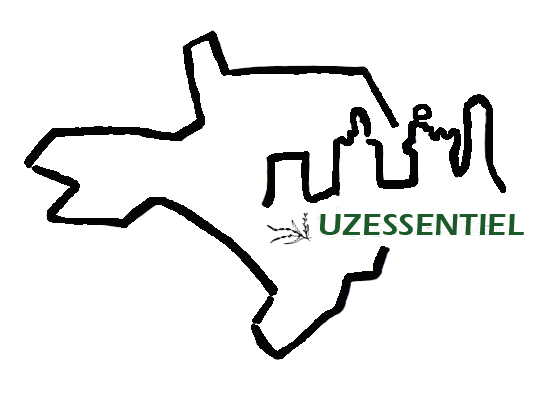An introduction to caving, in Dions
- Par nbesse
- Le 13/01/2023
- Dans UzEssentiel in English
FR - Among the many caves in the Gard, the cave of Dions, known as the mushroom house, is perfect for those new to the discipline of caving.

In the company of Michel, speleologist at the Comité de Spéléologie du Gard and our teacher of today's class, the small group that we form with Thomas and the juniors embark on the ascent of a short hill to reach the entrance of the cave, after having put on our wetsuits and harnesses, our helmets equipped with diode lights and tightened our chinstraps.
"The Baume Longue cave that we are exploring today is also known as the mushroom house.
It consists of two galleries, several cavities and a shaft a few metres deep".
where you can abseil down or climb back up, thanks to metal bars set in the stone*.
Once in the cave and following Michel's instructions, we set off on our underground exploration, the very first for some of us. Some juniors, how lucky they are, are already experienced in some techniques, especially those who climb with Uzescalade, the climbing club of Uzès.
We sneak, we crawl, we slide, to arrive at the first stage, a small cavity where we sit for a test: full silence in... total darkness once the light of our helmets turned off, and for one minute... Better not be claustrophobics...
Then follows a trip in a long, curved and narrow gallery which makes a loop, kind of a belly crawl. You have to try to squeeze your way through to get back to the starting point, crawling for the older and obviously taller ones. Return head first or feet first, it's up to you!
Belly crawl: A passage that is very low,
Abseiling (also rappelling), the process by which a climber descends a fixed rope,
Ascend, to climb up a fixed rope using an aid device**.
Now comes the suspension at the end of the rope. One by one we pass along the wall and reach an opening in the ground. It's time for an abseiling initiation, masterfully managed by Michel who takes care of the juniors and the 2 adults. Fun moment ahead!
In caving the lanyard is often double and even asymmetrical for the continuity
of the insurance when one must pass on the moorings.
Back in the big cave, we approach a big hole, a well a few meters deep, which we will have to follow hanging from the ropes connected to the handrail. The juniors and Thomas set off to explore the cavities (an encounter with a few bats for some of us!), the small slides, before finding themselves at the bottom of the shaft ready for a very sporting ascent.
Handrail: rope, cable or rod, fixed horizontally above a ledge,
in order to ensure the lanyard during transverse progressions, as with a staircase railing, but the handrail must be horizontal
The handrail should be horizontal and of moderate tension so that it does not stick to rough edges.
Returning to the good practice of using carabiners attached to the rope that follows the wall, the team climbs back up. Fortunately, a few steel bars anchored in the rock help to support the team and to help to exit the cavity.

"I contemplated all these marvels in silence. I didn't have words to express my sensations.
I thought I was witnessing, in some distant planet, Uranus or Neptune, phenomena of which my "earthly" nature was not aware.
New sensations required new words, and my imagination did not provide them.
I looked, I thought, I admired with an amazement mixed with a certain amount of fear"
(Journey to the Center of the Earth, Jules Verne, 1864)
The geologist's interpretation: This excursion into the center of the earth allowed us to see several karstic formations created in limestone when it cracks and lets water infiltrate itself. Gradually dissolving the limestone, after millions of years, it forms caves and galleries.... When the dissolution is particularly concentrated, it drips from the ceiling of the caves forming columns, the stalactites. The water that pearl from the ground forms other columns, this time called stalagmites, which can, after many years, join together. The process ends with the collapse of the karst, which then opens up to the outside (Pura, geology professor).
Sources: * Caves of Dionysus, blog Du fond des Espeluques, ** Glossary of caving and speleogy and Glossary of climbing terms.
Visuals: ©ThomasVincent, Nb©UzEssentiel





